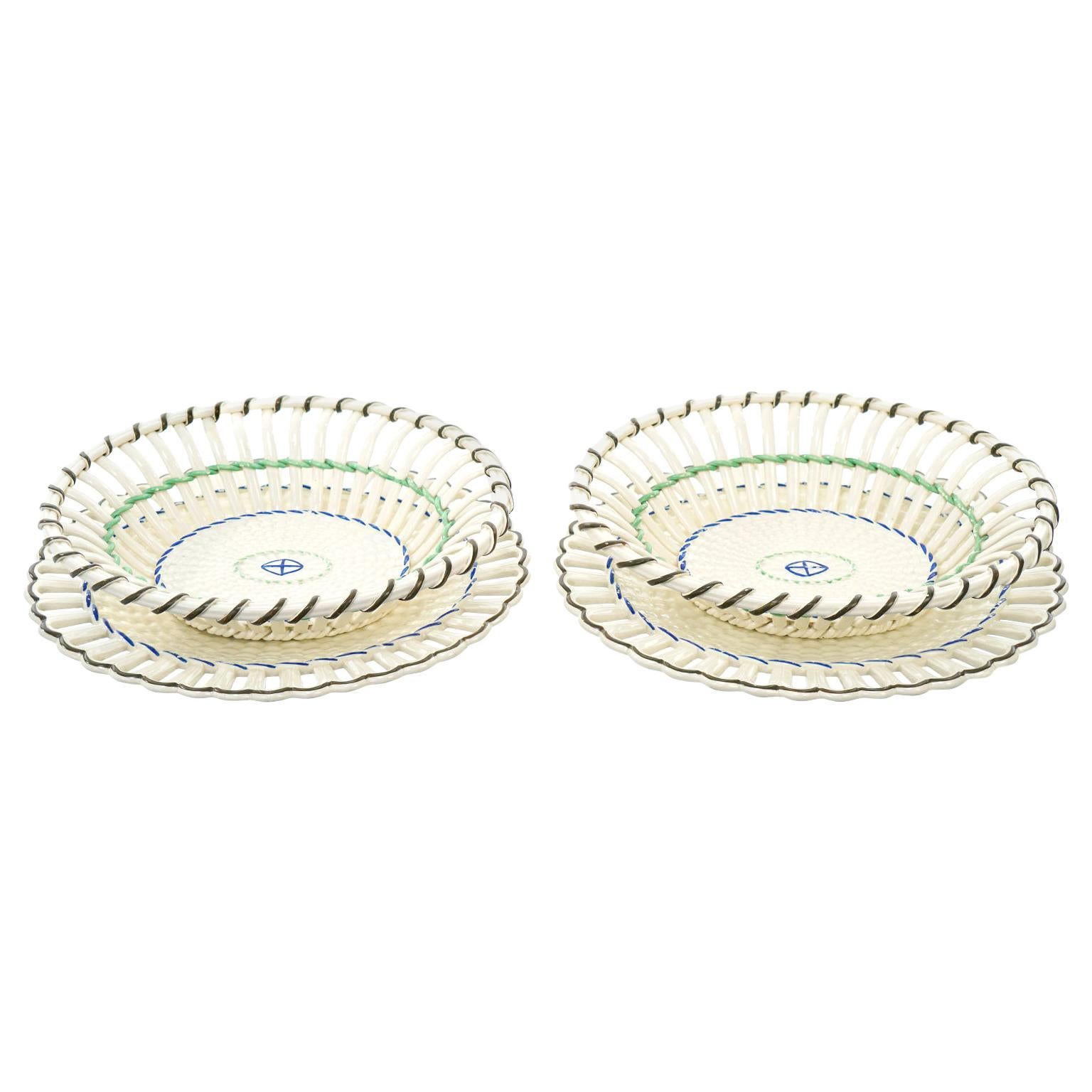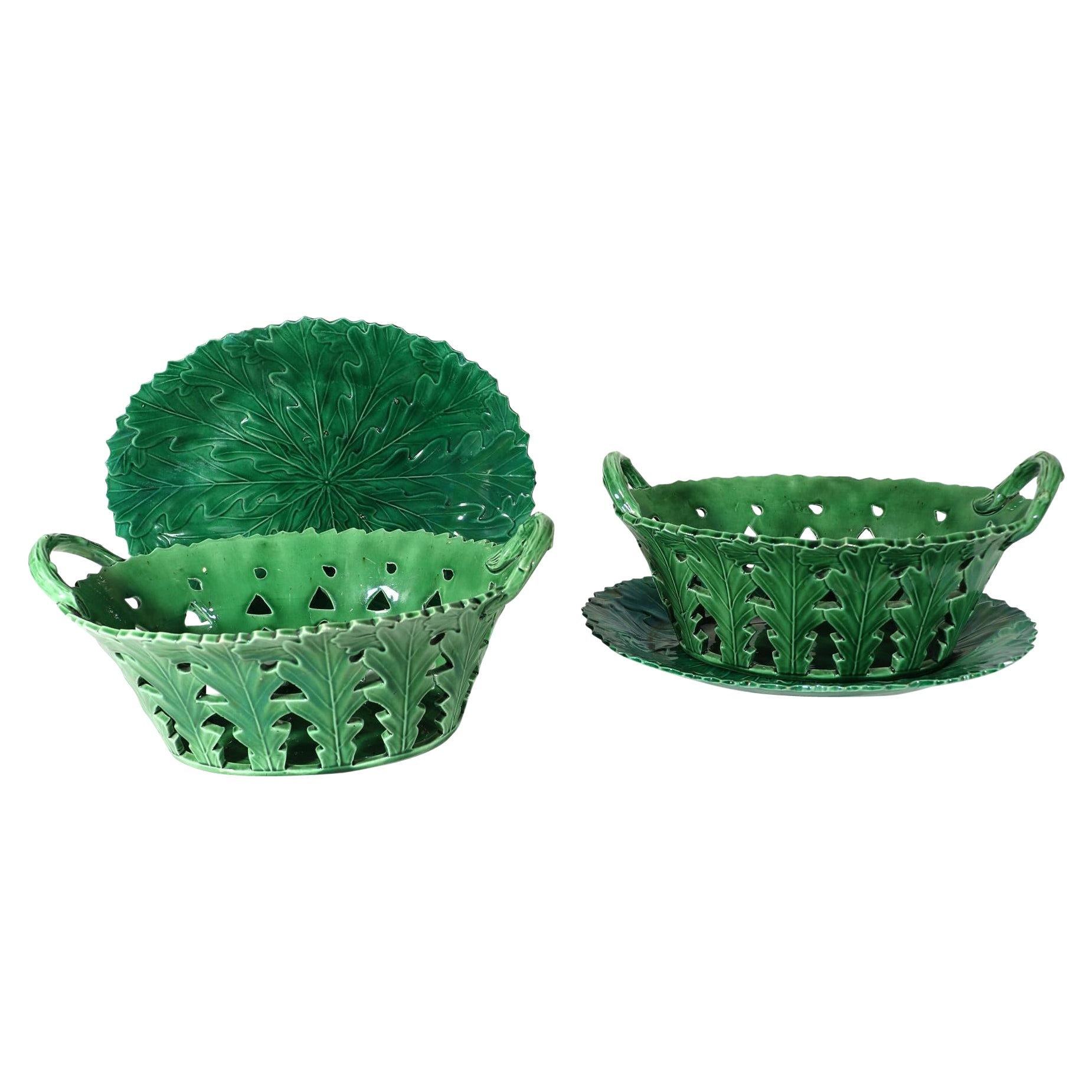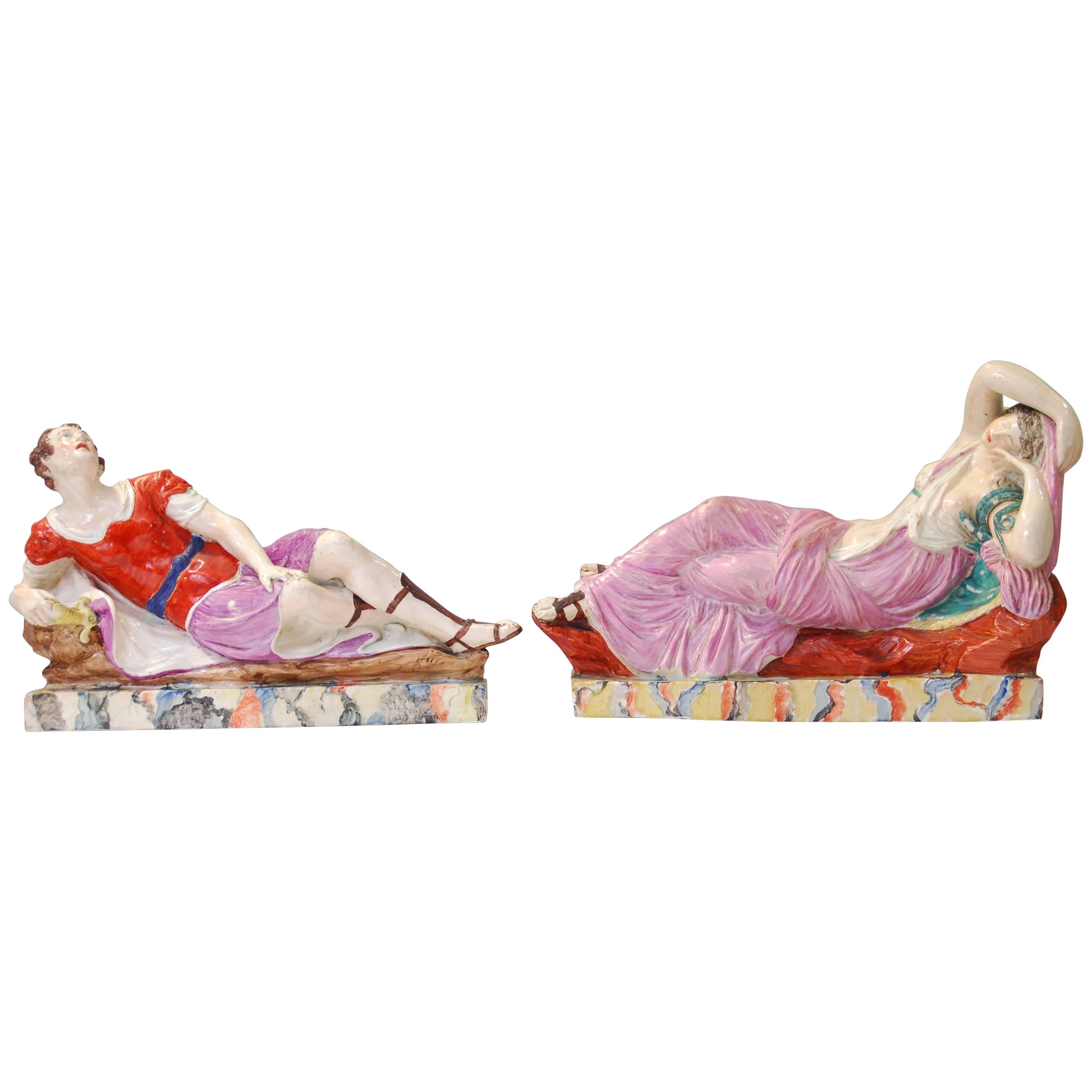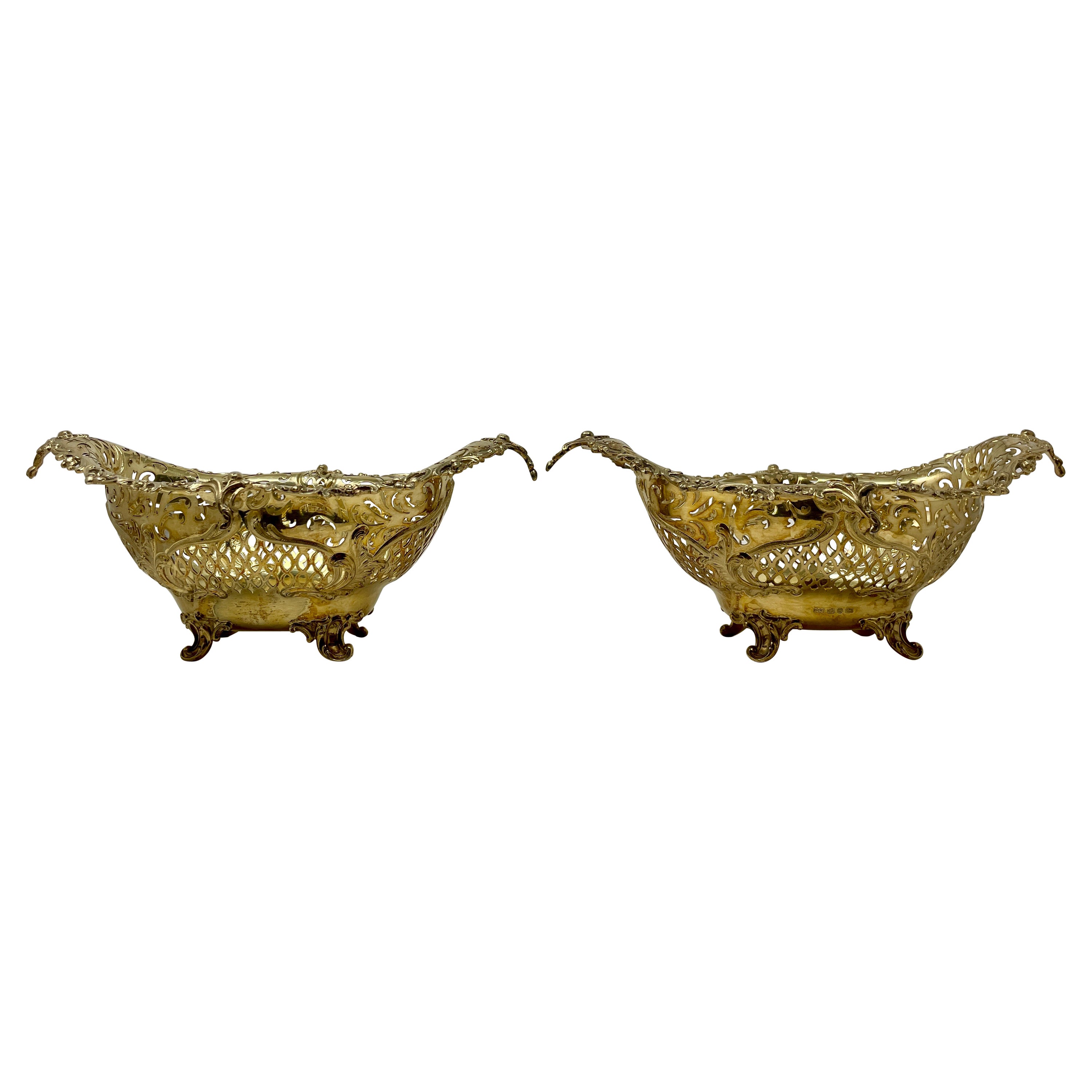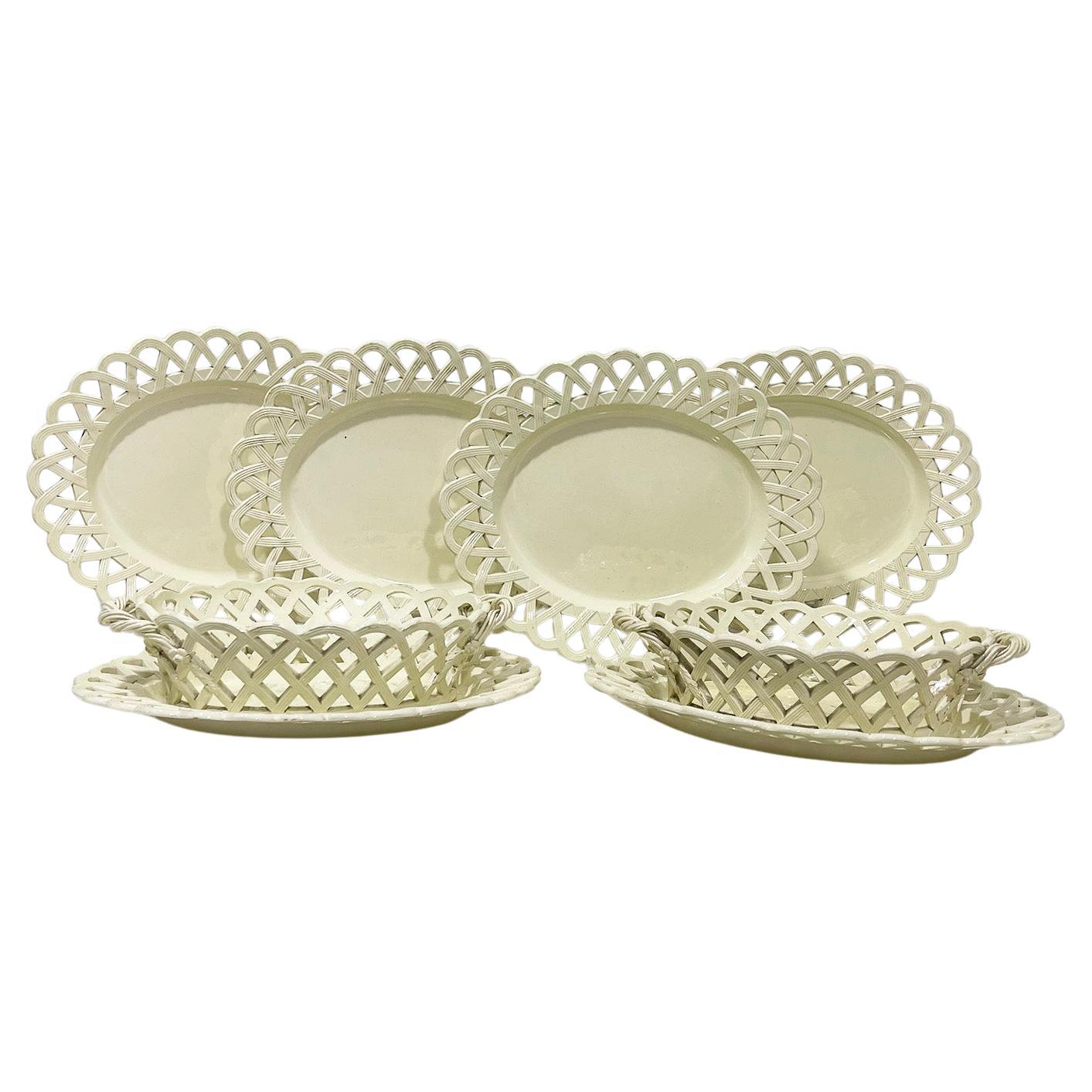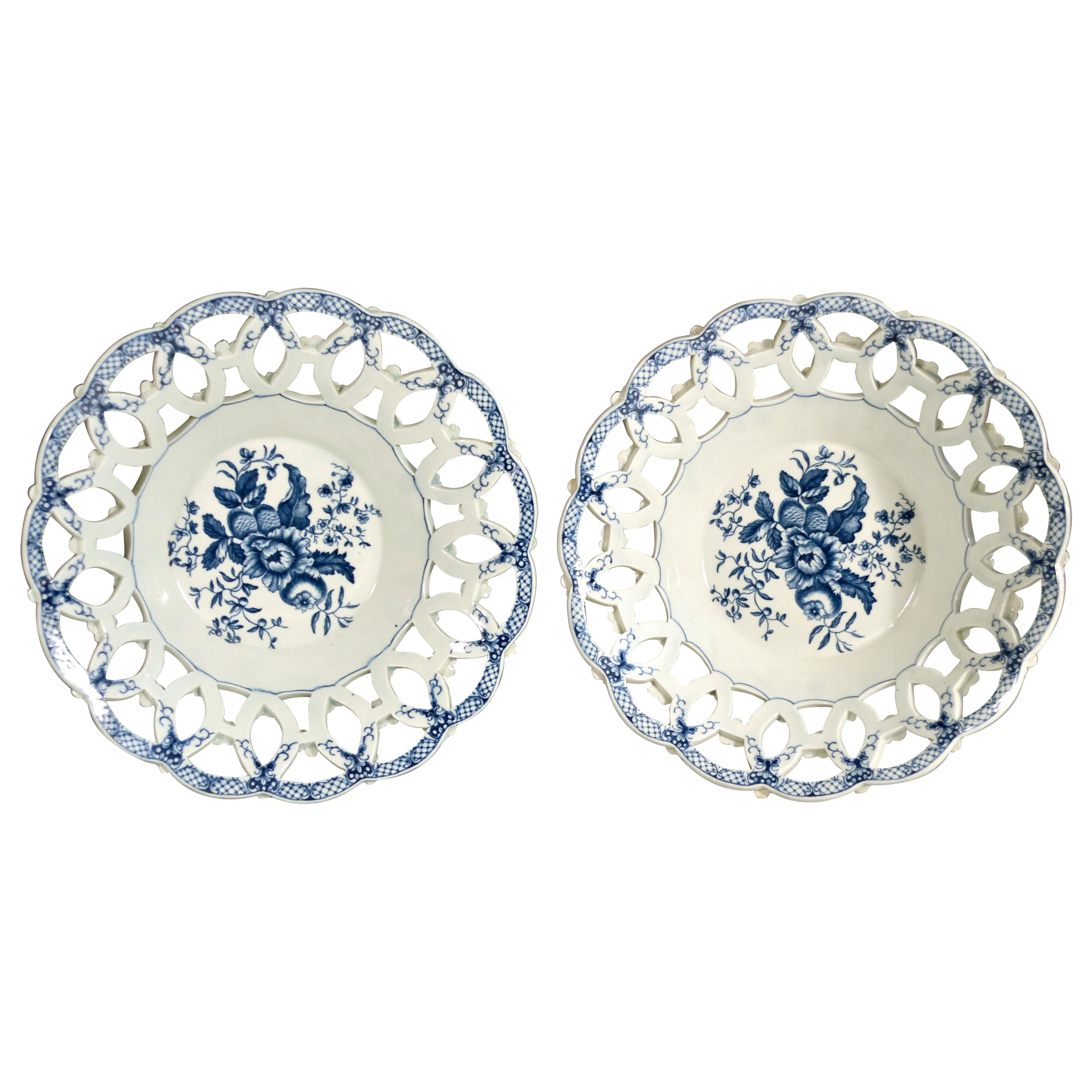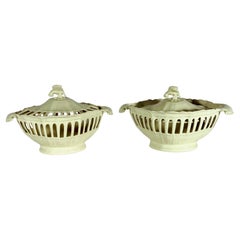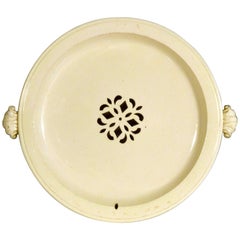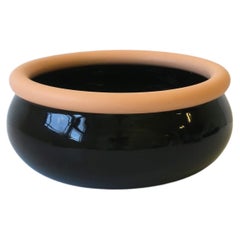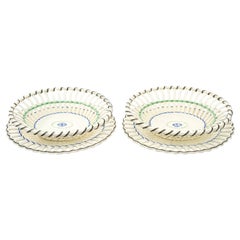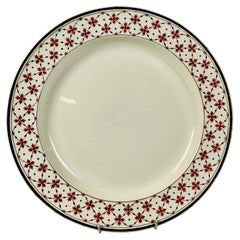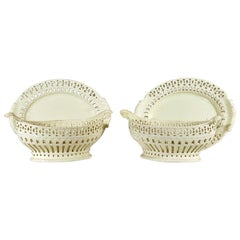
Pair of English Plain Creamware Openwork Baskets and Stands, circa 1780s-1990s
View Similar Items
Want more images or videos?
Request additional images or videos from the seller
1 of 15
Pair of English Plain Creamware Openwork Baskets and Stands, circa 1780s-1990s
About the Item
- Dimensions:Height: 5.25 in (13.34 cm)Width: 10.5 in (26.67 cm)Depth: 8.25 in (20.96 cm)
- Sold As:Set of 2
- Style:Georgian (Of the Period)
- Materials and Techniques:
- Place of Origin:
- Period:
- Date of Manufacture:1780s
- Condition:
- Seller Location:Downingtown, PA
- Reference Number:Seller: NY91741stDibs: LU861017080171
About the Seller
5.0
Recognized Seller
These prestigious sellers are industry leaders and represent the highest echelon for item quality and design.
Platinum Seller
These expertly vetted sellers are 1stDibs' most experienced sellers and are rated highest by our customers.
Established in 1916
1stDibs seller since 2009
365 sales on 1stDibs
Associations
The Art and Antique Dealers League of AmericaAntiques Associations Members
More From This SellerView All
- English Creamware Openwork Fruit Baskets and CoversBy Leeds PotteryLocated in Downingtown, PAEnglish Creamware Openwork Fruit Baskets and Covers, Leeds Pottery, 1930s The oval openwork plain creamware baskets and have a series of reeded openings to the central portion of th...Category
Early 20th Century English Georgian Decorative Baskets
MaterialsCreamware, Pottery
- English Pottery Green-Glazed Openwork Basket and StandLocated in Downingtown, PAEnglish pottery greenware openwork basket & stand, 1790-1880 The wonderful green-glazed openwork pottery basket and stand are decorated in the form of green-glazed openwork trell...Category
Antique Late 18th Century English Georgian Pottery
MaterialsPottery
- 18th-Century English Plain Creamware Hot Water PlateLocated in Downingtown, PAAntique English plain Creamware hot water plate, Circa 1785-1800 This is a rare survivor in creamware. A great form with openwork center and scroll h...Category
Antique Late 18th Century English Georgian Pottery
MaterialsCreamware, Pottery
- 18th-Century Green Glaze Oak Leaf Pottery Baskets & StandsLocated in Downingtown, PABritish green glaze oak leaf pottery baskets & stands, Attributed to attributed to probably West Pans, Scotland, probably William Littler, Circa 1770 The oval greenware basket...Category
Antique Late 18th Century English Regency Pottery
MaterialsPottery
- Creamware Chinoiserie Teapot & Cover with Openwork GalleryLocated in Downingtown, PAEnglish creamware Chinoiserie teapot & cover with pierced galleried rim. Circa 1775. The circular English creamware teapot with two designs front ...Category
Antique 1770s Georgian Pottery
MaterialsCreamware, Pottery
- Creamware Openwork Dessert Plates, Set of SevenLocated in Downingtown, PASet of Seven Continental Creamware Openwork Dessert Plates The basketweave creamware plates have an openwork reeded border with a gilt rim. The basketweave becomes tighter as it r...Category
Antique Mid-19th Century Victorian Pottery
MaterialsCreamware, Pottery
You May Also Like
- Postmodern Black and Terracotta Ceramic Bowl, 1980s 1990sBy MikasaLocated in New York, NYA beautiful black ceramic and terracotta bowl, Postmodern design period, circa late-20th century, 1980s, 1990s. Made in Portugal. Bowl has a black glazed ceramic exterior/interior an...Category
Late 20th Century Portuguese Post-Modern Decorative Bowls
MaterialsTerracotta, Ceramic
- Pair of Wedgwood Creamware Chestnut Baskets and UnderplatesBy WedgwoodLocated in Litchfield, CTBy Wedgwood, England. This pair of Chestnut Baskets and underplates was one of Wedgwood's most intricate handmade designs, circa 1790s. Redolent of the Georgian period, this color co...Category
Antique 1790s British Georgian Serving Pieces
MaterialsPorcelain
- Wedgwood Creamware Platter or Charger 18th Century Made in England Circa 1785By WedgwoodLocated in Katonah, NYThis Wedgwood creamware round platter or charger was made in 18th century England circa 1785. The border is decorated with a traditional neoclassical design of iron-red flower heads...Category
Antique Late 18th Century English Neoclassical Decorative Dishes and Vid...
MaterialsCreamware
- Two Pairs of Italian Maiolica Baskets, circa 1780By Antonio FerrettiLocated in Milano, ITTwo pairs of maiolica baskets Antonio Ferretti Manufacture Lodi, circa 1770-1790 Maiolica polychrome decorated “a piccolo fuoco” (third fire). Measures: A) Height 3.54 x 6.69 x 9.84 in (9 x 17 x 25 cm); B) Height 3.93 x 7.48 x 11.02 in (10 x 19 x 28 cm). Total weight 4.85 lb (2.200 kg) State of conservation: A) One of the smaller baskets has some areas of restoration, the other slight chipping from use; B) One of the larger baskets is intact and the other shows a clearly glued break. The mold with which the baskets were forged simulates a wicker weave. The two larger works have high, vertical walls, with branch-shaped handles penetrating the weave. The painted decorations, small polychrome flowers applied only externally, highlight the points where the weaves intersect. The decision to leave the center of the basket devoid of decoration is highly unusual, but given the size and complexity of the shape, as well as the quality of the enamel, it is possible to hypothesize that it represents a precise choice in manufacturing or for a particular client. The two smaller baskets have small, twisted handles and, on the outside, reproduce more decisively the characteristic wicker weave, obtained through thin molded lines. The interior exhibits a rich, typical decoration of naturalistic flowers: a bunch centered around a main flower and secondary stems accompanied by small “semis”. The exterior of these works is also adorned with small little flowers where the weaves intersect. The size and morphological characteristics of the baskets confirm their attribution to the Lodi factory of Antonio Ferretti between 1770 and 1790, during its most successful period; by this point his original reworking of the "Strasbourg" decoration, known as "old Lodi", had achieved great fame even outside Italy. This decorative choice represented a strong point of the Lodi factory, which established itself thanks to the vivid nature of the colors made possible by the introduction of a new technique perfected by Paul Hannong in Strasbourg and which Antonio Ferretti introduced in Italy. This production process, called “piccolo fuoco” (third fire), allowed the use of a greater number of colors than in the past; in particular, the purple of Cassius, a red made from gold chloride, was introduced. Its use allowed for many more tones and shades, from pink to purple. The Ferretti family had started their maiolica manufacturing business in Lodi in 1725. The forefather Simpliciano had started the business by purchasing an ancient furnace in 1725 and, indeed, we have evidence of the full activity of the furnaces from April of the same year (Novasconi-Ferrari-Corvi, 1964, p. 26 n. 4). Simpliciano had started a production of excellence also thanks to the ownership of clay quarries in Stradella, not far from Pavia. The production was so successful that in 1726 a decree of the Turin Chamber came to prohibit the importation of foreign ceramics, especially from Lodi, to protect internal production (G. Lise, La ceramica a Lodi, Lodi 1981, p. 59). In its initial stages, the manufacture produced maolicas painted with the “a gran fuoco” (double fire) technique, often in turquoise monochrome, with ornamentation derived from compositional modules in vogue in Rouen in France. This was also thanks to the collaboration of painters like Giorgio Giacinto Rossetti, who placed his name on the best specimens next to the initials of the factory. In 1748 Simpliciano made his will (Gelmini, 1995, p. 30) appointing his son Giuseppe Antonio (known as Antonio) as universal heir. After 1750, when Simpliciano passed away, Antonio was directly involved in the maiolica factory, increasing its fortunes and achieving a reputation on a European level. Particularly important was the aforementioned introduction in 1760 of the innovative “a piccolo fuoco” (third fire) processing, which, expanding the ornamental repertoire with Saxon-inspired floral themes, could commercially compete with the German porcelains that had one of its most renowned offerings in the naturalistic Deutsche Blumen. Antonio Ferretti understood and promoted this technique and this decoration, proposing it in a fresher and more corrective version, less linked to botanical tables...Category
Antique 1770s Italian Neoclassical Ceramics
MaterialsMaiolica
- Tragic Couple Antony and Cleopatra, Creamware, Ralph & Enoch Wood, circa 1780By Ralph Wood PotteryLocated in Melbourne, VictoriaCleopatra and Mark Antony, in enamelled creamware. After a model by Ralph and Enoch Wood, and quite likely made by this important partnership. The figur...Category
Antique Late 18th Century English Neoclassical Pottery
MaterialsCreamware
$3,040 Sale Price / set20% OffFree Shipping - Pair Antique English "Elkington & Co." Gilt Silver Openwork Baskets, Circa 1890By Elkington & Co.Located in New Orleans, LAPair Antique English "Elkington & Co." Gilt Silver Openwork Baskets from 1892 in Birmingham, England.Category
Antique Late 19th Century English Decorative Baskets
MaterialsSterling Silver
Recently Viewed
View AllMore Ways To Browse
1780s Pairs
Basket Of Fruit Ceramic
Pottery With Circle Design
Openwork Fruit Baskets
Vintage Oil Pot
Antique Wedgwood Pottery And Glass
French Pottery Jug
Antique French Confit Pots
Antique French Confit Pot
Antique Spanish Pottery
Floral Pottery
Pottery Teapot
Antique Salt Glaze
Hanging Pottery
French Rustic Pottery
Vintage Fish Pottery
Vintage German Pottery And Glass
19th Century Mug


